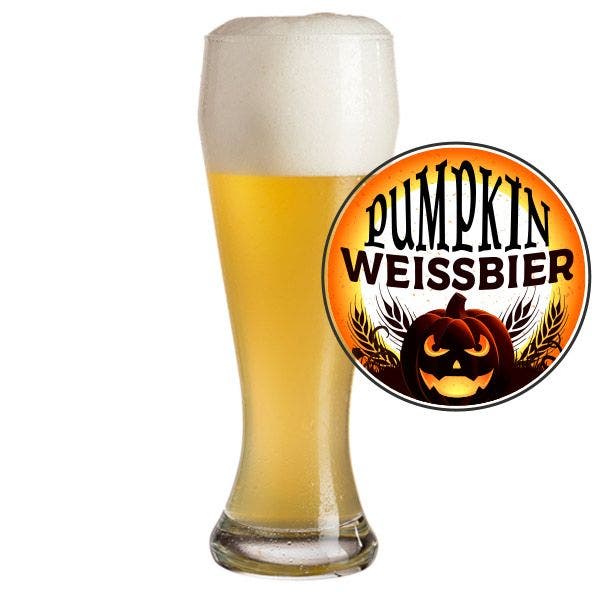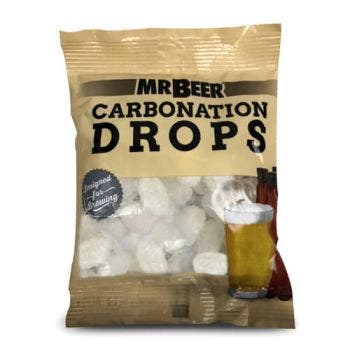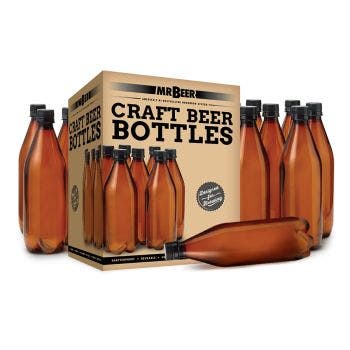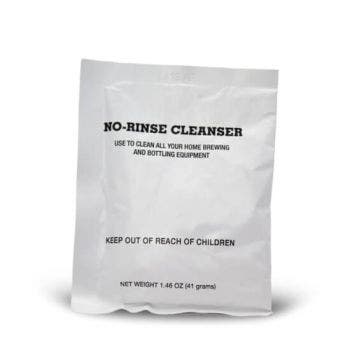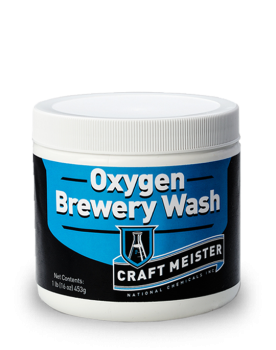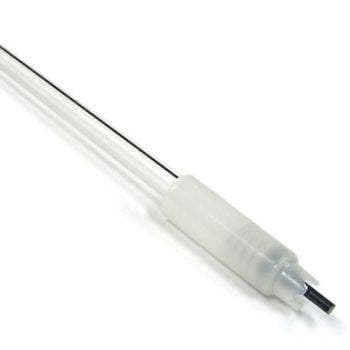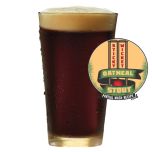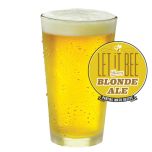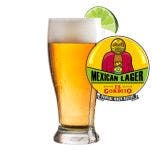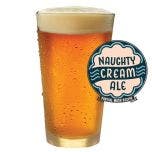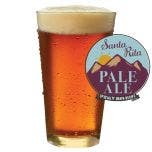Pumpkin Weissbier
Spookily good, this refreshing weissbier will remind you of everything good about fall. Much like the colors changing with the season, this brew will change in flavor both over the course of the conditioning period, and over the course of drinking a bottle as the brew begins to warm up. Take time to experience the complexities of this fantastic beer while admiring the changing foliage.
What You Get
1 Bavarian Weissbier Brewing Extract (HME)
1 Packet of Dry Brewing Yeast (Under the Lid of the Brewing Extract)
1 Packet of BrewMax LME Golden
1 Hop Sack
1 Packet of No-Rinse Cleanser
You Provide
10oz Pumpkin Puree
1 Tbsp. Mulling Spices
For Fans Of
Shock Top Pumpkin Wheat
Blue Moon Harvest Moon Pumpkin Wheat
Brew Specs
Flavor: Fruity
Original Gravity: 1.044
Final Gravity: 1.011
ABV: 4.5%
SRM: (Color): 3
IBU: (Bitterness): 19
STEP 1: SANITIZING
Cleaning is one of the most important steps in brewing. It kills microscopic bacteria, wild yeast, and molds that may cause off-flavors in your beer. Make certain to clean all equipment that comes in contact with your beer by following the directions below:
1. Fill clean keg with warm water to line mark 1 on the back, then add ½ pack (about 1 tablespoon) of No-Rinse Cleanser and stir until dissolved. Once dissolved, the solution is ready to use. Save the remaining ½ of No-Rinse Cleanser because you will need it for bottling.
2. Screw on lid and swirl the keg so that the cleaning solution makes contact with the entire interior of the keg, including the underside of the lid. Note that the ventilation notches under the lid may leak solution. Allow to sit for at least 2 minutes and swirl again.
3. To clean the spigot, open it fully and allow liquid to flow for 5 seconds and then close
4. Pour the rest of the solution from the keg into a large bowl. Place your spoon/whisk, can opener and measuring cup into the bowl to keep them cleaned throughout the brewing process. Leave them immersed for at least 2 minutes in cleaning solution prior to using.
5. After all surfaces have been thoroughly cleaned, do not rinse or dry the keg or utensils. Return lid to top of keg, proceed immediately to brewing.
STEP 2: BREWING
Brewing beer is the process of combining a starch source (in this case, a malt brewing extract) with yeast. Once combined, the yeast eats the sugars in the malt, producing alcohol and carbon dioxide (CO2). This process is called fermentation.
1. Remove the yeast packet from under the lid of the can of Brewing Extract, then place the unopened can and
BrewMax LME in hot tap water.
2. Add 1 Tbsp. of Mulling Spices to your hop sack tying it closed, then trim away excess material.
3. Using the measuring cup, pour 4 cups of water into your clean 3-quart or larger pot. Bring this to a boil, add in your
hop sack with the mulling spices, then remove from heat.
4. Open the can of Brewing Extract and BrewMax LME and pour the contents into the hot mixture in your pot. Stir
until thoroughly mixed. This mixture of unfermented beer is called wort.
5. Fill your fermenter with cold tap water to the mark 1 on the back. If using any other fermenter this would be
approximately 1 gallon of water.The add 10oz of Pumpkin Puree into the fermenter.
6. Pour the wort into your fermenter, and then bring the volume of the fermenter to mark 2 by adding more cold water.
(If you have a different fermenter top it off with cold water to the 8.5-liter mark).
7. Stir your wort mixture vigorously with your sanitized spoon or whisk.
8. Sprinkle the yeast packet into the keg, and screw on the lid. Do not stir.
Put your fermenter in a location with a consistent temperature between 68° and 78° F (20°-25° C), and out of direct
sunlight. Ferment for 14 days.
STEP 3: BOTTLING & CARBONATING
After 14 days, taste a small sample to determine if the beer is fully fermented and ready to bottle. If it tastes like flat beer, it is ready. If it’s sweet, then it’s not ready. Let it ferment for 3 more days (17 total). At this point, it is time to bottle. Do not let it sit in the fermenter for longer than 24 days total.
1. When your beer is ready to bottle, fill a 1-gallon container with warm water, then add the remaining ½ pack of the No-Rinse Cleanser and stir until dissolved. Once dissolved, it is ready to use
2. Distribute the cleaning solution equally among the bottles. Screw-on caps (or cover with a metal cap if using glass bottles) and shake bottles vigorously. Allow to sit 10 minutes, then shake the bottles again. Remove caps and empty all cleaning solutions into a large bowl. Use this solution to clean any other equipment you may be using for bottling. Do not rinse.
3. Add 2 Carbonation Drops to each 740-mL bottle. For 1-liter bottles, add 2 ½ drops; for ½-liter bottles add 1 drop. Alternatively, you can add table sugar using this table as a guide.
4. Holding the bottle at an angle, fill each bottle to about 2 inches from the bottle’s top.
5. Place caps on bottles, hand tighten, and gently turn the bottle over to check the bottle’s seal. It is not necessary to shake them.
6. Store the bottles upright and out of direct sunlight in a location with a consistent temperature between 70°-76°F or 21°-24°C. Allow sitting for a minimum of 14 days. If the temperature is cooler than suggested it may take an additional week to reach full carbonation.
TIP FROM OUR BREWMASTERS
After the primary carbonation has taken place your beer is ready to drink. We recommend putting 1 bottle in the refrigerator at first for 48 hrs. After 48hrs. give it a try and if it is up to your liking put the rest of your beer in the fridge. If it does not taste quite right, leave the bottles out at room temp for another week or so. Keep following this method until your brew tastes just how you like it.
This process is called conditioning and during this time the yeast left in your beer can help clean up any off-flavors. Almost everything gets a little better with time and so will your beer

